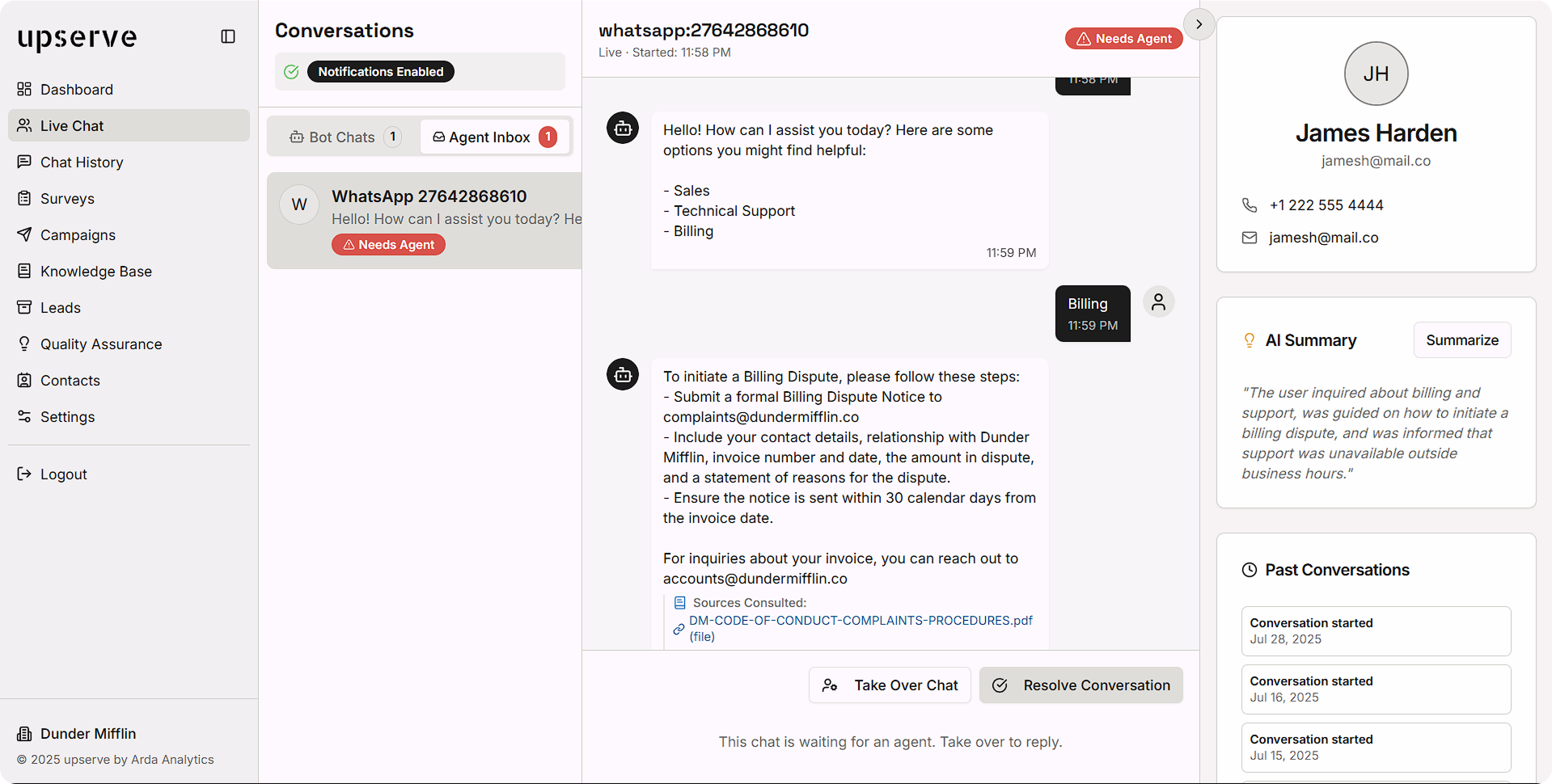When you think about training AI agents to support your customers, the first step isn’t the technology, it’s the structure of your knowledge base.
Even the smartest AI can only give great answers if the information it draws from is clear, well-organised, and written in a way that matches how customers actually ask questions.
Here’s a simple, non-technical guide to structuring your content so that AI agents (like those on upserve) can perform at their best.
1. Write in Question–Answer Format
AI works best when your content mirrors how people naturally ask for help. Instead of burying information in long paragraphs, break it down into clear Q&A pairs:
❌ Too vague:
“Our clinic accepts certain insurance providers.”
✅ AI-friendly:
Q: Do you accept Discovery Health medical aid?
A: Yes, we accept Discovery Health. You can use your membership card at the reception.
This makes it easy for the AI to match a customer’s question to a direct, actionable answer.
2. Keep Answers Short and Focused
Customers don’t want a lecture, they want clarity. Write answers in 2–3 sentences, maximum. If there’s more detail, link to supporting documents or add step-by-step points.
On upserve, AI agents use these concise chunks to keep conversations natural and avoid overwhelming customers with walls of text.
3. Use Categories That Mirror Real Customer Journeys
Organise your content around the problems customers are trying to solve. Examples:
- Appointments & Scheduling
- Billing & Payments
- Technical Support
- Orders & Returns
This structure helps the AI quickly find the most relevant section when responding to a query.
FYI: If you use upserve to manage your knowledge base you can easily link related content at the end of each file using [], e.g [Billing & Payments]
4. Include Keywords and Synonyms
Customers don’t always phrase things the same way. A patient might ask, “Can I book a checkup?” while another says, “How do I schedule an appointment?”
Add these variations directly into your knowledge base so the AI recognises all of them. upserve agents also learn from past conversations, so they’ll pick up on new phrasing over time.
5. Separate Policies from Instructions
Policies (like refund terms or insurance acceptance) are static. Instructions (like how to reset a router or redeem points) are step-by-step processes.
Keeping these distinct ensures the AI can give clear, context-appropriate responses.
6. Refresh Regularly with Feedback Loops
Outdated or vague answers frustrate customers. Review your most common questions every month, update details, and use surveys or chat feedback to spot gaps.
On upserve, this is even easier: the platform captures recurring questions from past conversations and prompts you to add them to your knowledge base.
Final Thought
A well-structured knowledge base is like giving your AI agent a clear playbook. It ensures answers are accurate, concise, and delivered in a way customers actually understand.
With upserve, all you need to do is upload your Q&A content, organise it by customer need, and let the platform’s AI do the rest, learning, improving, and scaling with your business.
Need help getting started with your knowledge base? Book a discovery call with the team upserve.tech
👉 Next in the series: Self Improving Agents: How Past Conversations Can Train Smarter AI Agents.




